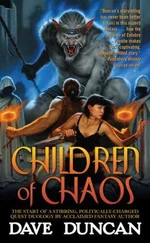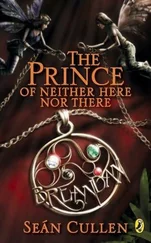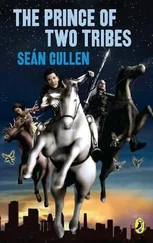Misty’s yard backed right up to the soccer field where Eric had fired on students, but she had arrived by a much more circuitous route. Misty was a working mom, so she was not present to hear Eric fire toward her house. But her husband, Brad, was. He had come home sick, heard a couple of pops, but thought nothing of them. Firecrackers, maybe some pranksters. He lived beside a high school. He was used to commotion. He didn’t even put his shoes on to have a look.
Half an hour later, Misty sat down to lunch with a coworker and got a disturbing call. It was probably nothing, but she called Brad to check. He put on his shoes. Brad went out back and peered over the fence. Bedlam. The schoolyard was swarming with cops.
Misty Bernall was a tall, attractive woman in her mid-forties with a loud voice and a commanding presence. She had full features and the same curly blond hair as Cassie, worn in a similar style, though shorter, just past her shoulders. She could be mistaken for a much older sister. Brad was taller, with dark hair, and handsome—a big guy with a soft voice and a humble demeanor. They shared an intense faith in the Lord, and they began begging Him to save their kids.
They could cover more ground apart. Misty headed for the high school. Brad hung by the phone.
At the perimeter, officers struggled to hold back the parental onslaught. TV anchors broadcast their entreaties: “As difficult as it may be, please stay away.” But fresh waves of moms and dads kept swarming over the hill.
Misty gave up. Two rendezvous points had been set up. Misty chose the public library on the other side of Clement Park. She found very few students. Where were they?
When they poured out of the high school, students had seen two main options: a subdivision across Pierce Street, or the wide-open fields of Clement Park. Hardly anyone chose the park. They crouched behind houses, worked themselves under shrubbery, rolled under cars. Any semblance of protection. Some pounded frantically on front doors, but most of the houses were locked. Stay-at-home moms started waving strangers in off the street. “Kids were piling into houses,” one student said. “There must have been a hundred fifty or two hundred kids piled into this house.”
The second rendezvous point, Leawood Elementary, sat in the heart of that neighborhood, so most of the survivors gravitated there. Parents were sent to the auditorium, where kids were paraded across the stage. Moms shrieked, hugs abounded, unclaimed kids sobbed quietly backstage. Because the kids were hard to keep in one place, sign-in sheets were posted on the walls, so parents could see evidence in their child’s own hand.
There was no parade of survivors at the public library. Misty was conflicted. Leaving for Leawood was risky: the roads had been closed, so everything was by foot now. She could easily miss her kids in transit. A local minister got up on a chair and shouted: “Please stay here!” The fax would arrive any minute, he assured them. They would be much better off waiting. The fax was a copy of the sign-in sheets from Leawood. Misty waited impatiently for its arrival.
The mood stayed tense but restrained. Commotion erupted in little bursts. “Paul’s OK!” a woman screamed. She held up her cell phone. “He’s at Leawood!” Her husband rushed over. They hugged, they wept. Tears were rare. It was too scary to cry in fear; only reunion allowed release. A clump of students would appear now and then over the hill. If they weren’t claimed immediately, a pack of moms would descend to interrogate them. Always the same question: “How did you get out?!”
They needed reassurance there was a way out.
“I didn’t know what to do,” a young girl said. “We heard guns and I was standing there and the teacher was crying and pointing to the auditorium and everybody was running and screaming and we heard an explosion—I guess that was a bomb or something. I didn’t see this but we were trying to find out and I guess they shot again and everyone started running and I was like, What is going on! They started shooting again and there was complete panic. People were shoving, they were going into the elevators and people would like push people off and we were all just running…”
Most of the stories sputtered out like that: disjointed flurries of re-created mayhem. The words ran together until the witness ran out of breath. A winsome freshman was different. She was still in her Columbine gym uniform, and recounted her escape dispassionately. She had faced the gunmen in the hall. She was pretty sure one had run right past her, shooting. But there was so much smoke and confusion, she wasn’t sure what was happening or where or anything. Bullets ricocheted down the corridor. Glass shattered, metal clattered, chunks of plaster crashed down on the floor.
Moms gasped. Someone asked if she’d feared for her life. “Not really,” she said. “Because the principal was with us.” She said it matter-of-factly, with earnest conviction. It was just the tone a younger girl might have used to explain that she felt safe with her daddy.
The stories were harrowing, but they reassured the moms. Every escape was different, but they ended the same: the kids escaped. The accumulation was soothing.
Misty questioned every kid. “Cassie!” she shouted. “Chris!” She worked her way across the crowd and back again. Nothing.
____
Command had fallen to the newly elected Jeffco sheriff, John Stone. He had not yet faced a murder case in office. The metro cops were horrified to discover that the county was in charge. Many were open with their disgust. City and even suburban officers thought of sheriff’s deputies as security guards. These were the guys who shuttled defendants to court from the jail. They stood guard while the real cops testified about the crimes they had responded to and investigated.
The grousing increased when they learned who was heading the command. John Stone looked the part of an Old West sheriff: a big, burly guy with a large potbelly and a thick gray mustache, weathered skin, and craggy eyes. He wore the uniform, the badge, and the pistol, but he was a politician. He had been a county supervisor for twelve years. He’d run for sheriff last November and had taken the oath in January. He’d appointed John Dunaway as his undersheriff. Another bureaucrat.
The sheriff and his team defended the perimeter. Gun blasts came and went. The SWAT teams seethed. When was somebody going to allow them to advance?
Dunaway named Lieutenant David Walcher incident commander. Operations would now be directed by a man who did police work for a living, with oversight from Dunaway and Sheriff Stone. The three set up a command post in a trailer stationed in Clement Park, half a mile north of the school.
Just after noon, a SWAT team made its first approach on the school. The officers commandeered a fire truck for cover. One man drove the truck slowly toward the building, while a dozen more moved alongside. Near the entrance, they split in half: six and six. Lieutenant Terry Manwaring’s team held back to lay down suppressive fire and later work its way to another entrance. At approximately 12:06, the other six charged inside. Additional SWAT team members arrived moments later and followed them.
The team thought they were in striking distance of the cafeteria. They were on the opposite end of the building. Lieutenant Manwaring had been inside Columbine many times, but he was unaware it had been remodeled and the cafeteria moved. He was perplexed.
The fire alarm had not been silenced. The men used hand signals. Every cupboard or broom closet had to be treated as a hot zone. Many doors were locked, so they blasted them open with rifle fire. Kids trapped in classrooms heard gunfire steadily approaching. Death appeared imminent. Parents, reporters, and even cops outside heard the shots and came to similar conclusions. One room at a time, the team worked methodically toward the killers. It would take three hours to reach their bodies.
Читать дальше







